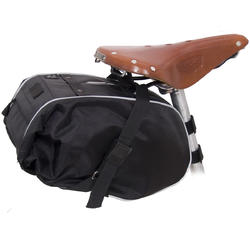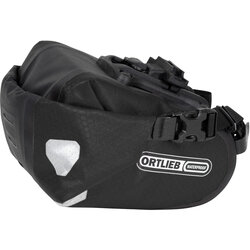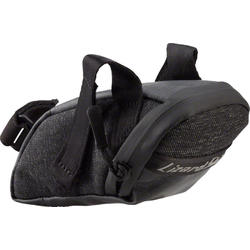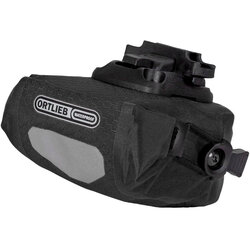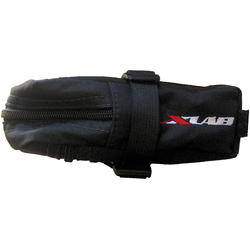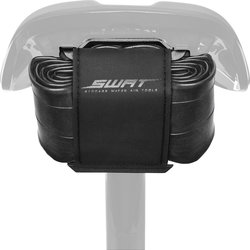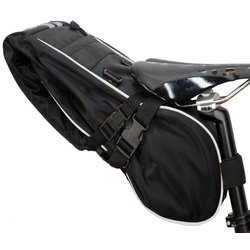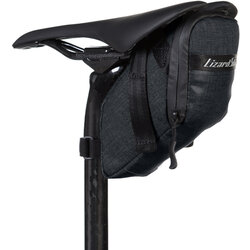FIXING A FLAT TIRE
Learn to fix a flat with confidence
Sooner or later, you'll ride over some glass or perhaps hit a rut or hole and get a flat tire. When this happens, don't panic! As long as you carry a few basic tools (which we can help you with), flat repair is easy—even fun! Here's how it's done. Note that these instructions are for standard tires and tubes.
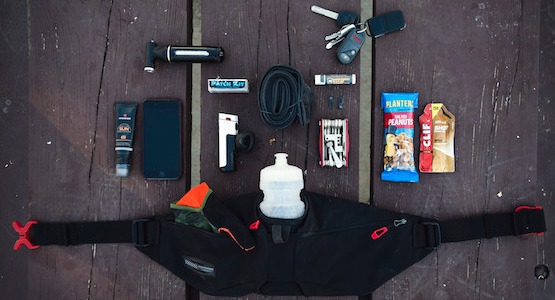
Be prepared
First, you'll need a pump (one that's right for your valve type and that's carried on your bike or in a pack), a spare tube (to replace the popped one) and tire levers (for removing the tire). Carry the tire levers and spare tube in a seat bag or your hydration pack. Most pumps can be frame mounted or tucked it in your pack if you carry one.
How to fix a flat
Here are complete instructions for each of the simple steps to fixing your flat tire. Note that, while we've tried hard to answer every possible question you could have about flat tire repair, you only need to read as much as you want.
1. Open the brake
As soon as you get that "sinking" feeling or hear the hiss of escaping air, let your ride partners know you have a flat (so they won't disappear over the horizon) and stop in a safe spot. If it's a rear flat, shift onto the smallest rear cog. The first step in wheel removal (except for bikes with disc brakes) is opening the brake, which makes it easier to get the wheel out.
Open sidepull brakes by fully rotating the little lever on the brake upwards. Open linear-pulls (also called "direct-pulls" or "V-brakes") by lifting the end of the "noodle" out of its holder. Some sidepulls are opened by pressing a button on the lever. Look for this if there's no lever on the brake. Open cantilever brakes (these feature a cable that runs over the top of the tire) by lifting the cable end on one side out of its holder.
2. Remove the wheel
Open the quick release (or loosen the axle nuts) on the wheel with the flat and lift the bike to remove the wheel. To extract rear wheels, it helps to pull the derailleur back slightly to clear the axle parts as the wheel passes through. For fronts, you'll probably need to hold one side of the quick release and turn the other counterclockwise to create clearance to get past the wheel-retention ("safety") tabs on the fork.
3. Remove the tire and tube
Remove the valve cap and nut sometimes found on Presta valves. For Presta valves, unscrew the tip and press down to let all the air out. For Schraders, poke the end of the tire lever into the valve to release all the air. Starting directly opposite the valve, wiggle a tire lever beneath the tire's edge and pry down to lift. If possible, hook the lever on a spoke (many levers are made to do this), or hold it in place. Place another lever about 4 inches away from the first and pry here. Continue with your third lever until you can get one side of the tire off. Then reach inside and fully extract the tube. Pull the other side of the tire off the same side of the wheel or pry it off with the levers.
4. Inspect the tire
It's important to find whatever caused the flat and remove it. If you don't, the culprit might still be in the tire where it'll just pop your new tube! To find it, remove your glove (or use a rag), and run it around inside the tire in both directions. If something sharp is still stuck in your tire, it'll snag the glove. Remove the nasty. If you can't find anything, it's likely it got knocked out during the disassembly procedure.
5. Install the tube and tire
Inflate the new tube just enough to round it out and remove any wrinkles, and place it inside the tire. Then, stand the wheel up (rest it against your shins if needed) so that the valve hole is on top, and hold the tire/tube over the wheel so that the valve is on top.
Place the valve partway into the hole and simultaneously push the top section of the tire edge (called the "bead") that's at the valve and closest to your legs onto the rim. Then, with both hands moving downward away from the valve using the ground to push against, finish working the bottom tire bead (the one closest to your legs) onto the wheel all the way around the wheel.
With one bead in place, tuck the tube fully inside the tire and on top of the rim. This will cause the other bead to rest flush against the rim. Work this bead on starting at the valve as you did with the first. To get the bead started, you may have to push the valve into the tire to provide clearance for the bead. Once you've got the bead started, work your hands away from the valve pressing the bead onto the rim around the wheel as you did in step 2 above.
With a few inches of bead left to pop onto the rim, the tire will resist. Let all the air out. Crouch and rest the wheel on your knee to have something to push against. Now, hold the bead in place with one hand and with your stronger hand, push down to roll the stubborn section onto the rim with the heel of your hand. But don't try to pop it on all at once. Install an inch at a time, moving your hand along until you've fully installed the tire. If it resists, be sure all the air is out of the tire. Got it? Good job!
6. Inflate and seat tire, then re-install the wheel
Place your pump on the valve and inflate the tire. To prevent valve damage, brace the valve by wrapping a finger behind a spoke and your thumb over the tire so you're pushing against your hand, not the valve. And hold the pump steady, don't wiggle it around as you pump. Inflate the tire until it's just firm (not fully inflated). At this point, inspect the tire to make sure it's "seated," which means that it's sitting correctly on the wheel.
If the tube gets trapped beneath a bead, inflating further may blow the tire and tube off the rim. There are bead lines on the sides of the tire that should be equidistant from the rim all the way around on both sides of the wheel. If they're not, or if you see a section of tube peeking out from under the tire, let the air out, poke the tube gently back into place with your tire lever (don't even think of using a screwdriver, which will pop the tube), re-inflate partway and check the tire again.
When it's seated correctly, inflate the tire fully. Install the valve nut (if your tube uses one) and cap finger tight (overtightening the valve nut can damage the tube and make it difficult to loosen it when you need to fix a flat). Reinstall the wheel in the frame, close the brake quick release or reattach the noodle or cable and you're ready to ride!
Video: How to Fix a Flat
Watch this video from our friends at Park Tool for an overview of fixing a flat tire on a bike.
More Tech Tips from Landry's
Check out more tips on basic bicycle maintenance to keep you and your bike riding smoothly.
Seat Bags at Landry's
Conveniently carry spare tubes, tools, and other gear under your bike's seat.

